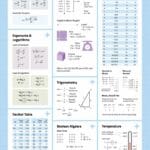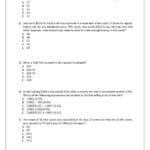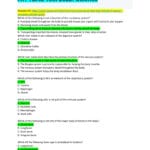Hey there, future paraeducators! Ready to ace the paraeducator exam and launch an amazing career supporting students? This guide covers everything you need to know, from content to strategies. We’ll break down the exam, offer practice questions, and share insider tips to help you thrive.
Ace the Exam: Your Prep Roadmap
Becoming a paraeducator is a rewarding journey, and the first step is often the paraeducator exam. This guide simplifies the process, helping you not just pass, but excel.
What’s the Exam About?
The paraeducator exam assesses your foundational skills in reading, writing, and math—essential for supporting student learning. It confirms your ability to handle the daily academic demands of the job.
Prep Like a Pro: Your Study Game Plan
Preparing for the exam doesn’t have to be overwhelming. Consistent effort and the right resources are key.
Step 1: Practice Tests
Free practice tests are invaluable. Sites like parapropracticetest.com (and others you can find online) offer realistic simulations. These “dress rehearsals” reveal question types, highlight your strengths, and pinpoint areas needing improvement, reducing pre-test jitters.
Step 2: Study Guides
Study guides are your trusted companions, breaking down key concepts and offering targeted practice. Choose a format (printed or online) that suits you.
Step 3: Time Management
Practice answering questions efficiently to master the exam’s time limit. Timing yourself during practice tests builds focus and prevents time crunches during the real exam.
Step 4: Eliminate Incorrect Answers
Even without absolute certainty, eliminating wrong choices significantly boosts your chances. Practice this “detective work” to narrow down options.
Kentucky Paraeducator Assessment (KPA)
Kentucky uses the KPA, which, while similar to other paraeducator exams, may have unique aspects. Consult the KPA website for specific requirements to ensure you’re fully prepared.
After the Exam: A World of Opportunities
Passing the exam unlocks a rewarding career with multiple paths. You might start assisting teachers but could specialize in working with specific student needs or take on administrative roles. It’s a field brimming with growth potential.
Expert Advice: Wisdom from the Field
Seasoned paraeducators offer these valuable insights:
- Believe in Yourself: Confidence in your abilities is essential.
- Find Your Tribe: Connecting with mentors or other paraeducators provides invaluable support.
- Never Stop Learning: The field constantly evolves; embrace professional development opportunities.
- Embrace the Journey: Celebrate successes and learn from challenges.
Decoding the Paraeducator Role: Duties and Impact
Paraeducators, also known as instructional assistants, paraprofessionals, or teacher aides, are essential members of the educational team. They partner with teachers, providing vital support to ensure every student thrives.
Paraeducators work closely with teachers, acting as co-pilots in the classroom. Their multifaceted roles adapt to student and school needs.
Instructional Support: Paraeducators might work with small groups, provide one-on-one tutoring, or prepare classroom materials, offering individualized attention that teachers may not always have time to provide.
Classroom Management: They help maintain a positive learning environment, managing transitions, tracking supplies, and being an extra set of eyes and ears.
Special Needs Support: Paraeducators are crucial in supporting students with physical, learning, or behavioral challenges, assisting with mobility, communication, and learning strategies.
Communication Liaison: They bridge communication between teachers, students, and families, sharing progress, concerns, and even interpreting for non-English speaking families.
Paraeducators come from diverse backgrounds, bringing a wealth of perspectives and skills to the classroom. There’s no single mold.
The paraeducator’s role is constantly evolving as educational understanding and student needs change. Ongoing discussions within the field explore how to best utilize and support paraeducators, suggesting increased responsibilities and influence in the future.
| Task | Description |
|---|---|
| Instructional Support | Assisting with lesson delivery, small group work, individualized tutoring, material preparation. |
| Classroom Management | Maintaining a positive learning environment, managing transitions, tracking supplies, behavioral assistance. |
| Special Needs Assistance | Supporting students with diverse needs, including physical, learning, and behavioral challenges. |
| Communication | Facilitating communication between teachers, students, and families, sharing progress, concerns, and interpreting. |
| Other Responsibilities | May include lunch/recess supervision, administrative tasks, or leading extracurricular activities. |
Understanding ParaPro Test Scores: Decoding the Numbers
Let’s delve into what your ParaPro test score means and how it works.
What’s a “Good” Score?
The ParaPro Assessment doesn’t have a publicized “highest” score. The goal is to achieve the state-required passing score, typically between 450 and 466, not a theoretical maximum. Check the official ETS Praxis website or your state’s Department of Education for specific requirements.
Interpreting Your Score
The 90-question, one-hour test yields a scaled score between 420 and 500. Your score report provides a detailed performance analysis:
Total Test Score: Your overall scaled score (420-500), presented alongside the passing score.
Content Area Scores: Breakdown of your performance in reading, writing, and math, highlighting strengths and weaknesses.
Percentile Rank: Indicates your ranking compared to other test-takers.
The Long-Term Impact of Your Score
Your ParaPro score is crucial for state certification and can inform your professional development. ETS retains scores for ten years (for tests taken after December 1, 2012), helpful for recertification.
Focus on Skills, Not Just the Number
The test focuses on ensuring you have the necessary reading, writing, and math skills to succeed as a paraprofessional. Focus on building these foundations.
Additional Tips
- Practice: Utilize ETS Praxis study guides and practice tests.
- Elimination: Rule out incorrect answers to improve your odds.
- Kentucky KPA: If you’re in Kentucky, familiarize yourself with the Kentucky Paraeducator Assessment.
The Indispensable Role of Paraeducators: More Than Just Classroom Support
Paraeducators are invaluable members of the school team, essential to effective education. Their presence enables teachers to reach more students, creating a better learning experience for all.
In a busy classroom, paraeducators offer essential support. They provide one-on-one attention, helping students grasp challenging concepts, reinforcing lessons, and preparing learning materials, allowing teachers to focus on the broader classroom dynamics. This individualized support unlocks student potential.
Beyond academics, paraeducators are vital for classroom management, promoting a productive environment, working with students on behavioral goals, resolving conflicts, and ensuring smooth operations, especially beneficial in classrooms with special needs students.
The benefits extend school-wide. Research suggests a link between well-trained paraeducators and improved student outcomes, particularly in reading and math, potentially narrowing achievement gaps. Ongoing research continues to explore their long-term impact.
Paraeducators contribute to administrative tasks—organizing, preparing classrooms, taking attendance, and communicating with parents. These seemingly small contributions free up teachers’ time for lesson planning, feedback, and addressing individual needs.
| Area of Impact | Paraeducator’s Role | Potential Benefits |
|---|---|---|
| Instructional Support | Assisting with lesson delivery, preparing materials, individualized help | Improved understanding, engagement, and learning outcomes. |
| Behavioral Management | Implementing behavior plans, promoting positive behavior, resolving conflicts | Enhanced classroom environment, reduced disruptions, improved behavior. |
| Administrative Tasks | Managing operations, organizing materials, communicating with parents | Reduced teacher workload, increased instructional time, improved efficiency. |
| Inclusive Education | Supporting diverse needs, adapting materials, facilitating participation | Greater inclusion, improved access to learning for all students. |
Investing in paraeducators is an investment in students. It recognizes that every student deserves the chance to succeed, which sometimes requires extra support. Ongoing research continues to explore their role, but their importance is clear. They are essential to a positive and supportive learning environment.
If you’re preparing for your exams and need to brush up on your statistics, consider exploring resources like mystatslab to practice various question types.
- China II Review: Delicious Food & Speedy Service - April 17, 2025
- Understand Virginia’s Flag: History & Debate - April 17, 2025
- Explore Long Island’s Map: Unique Regions & Insights - April 17, 2025

















2 thoughts on “2024 Paraeducator Exam: The Complete Guide to Passing & Thriving as a Paraeducator”
Comments are closed.